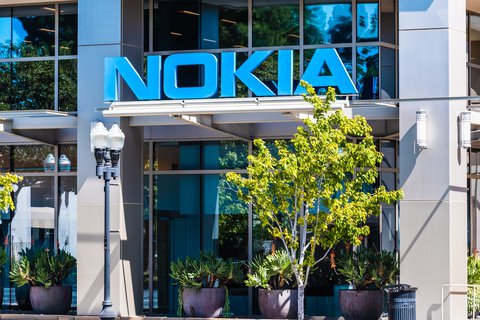Nokia this week introduced its new 5G Cloud-RAN solution that’s also architected for Open RAN with O-RAN compliant interfaces.
Nokia already has customers signed up for commercial deployments of its second-generation 5G AirScale Cloud RAN, but the Finnish vendor isn’t disclosing who quite yet, according to Sandro Tavares, head of Mobile Networks Marketing at Nokia, in emailed responses to Fierce.
The “fully cloudified and disaggregated 5G base station” will be commercially available this year, with wider availability expected in 2021.
The first AirScale base station release, based on vRAN 1.0, has been operating on a commercial millimeter wave network in the U.S. since early 2019. That version had a virtualized Centralized Unit, but Nokia still needed a traditional hardware module to run the real-time layers of the RAN baseband function, Tavares explained.
This time around it also has a virtualized Distributed Unit (vDU), so both non-real-time and real-time RAN functions are virtualized and run on a cloud stack in x86-based Nokia AirFrame Open Edge Servers and Rackmount Servers.
ain benefits for operators include better flexibility and scalability of the RAN, along with enhanced pooling capabilities, Tavares said. In addition, “considering that we will have a cloud infrastructure being deployed to support the vDU, the same infrastructure can be re-used to host applications that require low latency.” That includes IoT applications, and support for end-to-end network slicing.
Ahead of the announcement, Nokia finished successful customer trials, including end-to-end 5G data calls over 6 GHz spectrum using Nokia’s Cloud Packet Core, the new RAN solution in vRAN2.0 configuration with full baseband in Cloud, Nokia’s fronthaul gateway and a commercial 5G device.
Nokia mentioned it’s been working on using Graphics Processing Units (GPUs) for hardware acceleration, that are expected to be fully ready in 2022. The role of that, according to Tavares, is that accelerator cards can more efficiently process some of the functionality in the lower Layer 1 of the distributed unit. While it can be done with both field programmable gate array (FPGA)-based designs or GPUs, he said FPGAs are available now while GPUs “still need some significant development work to adapt them to this specific L1 use case.”
GPUs are expected to provide additional capabilities in combination with AI and machine learning-based features, he added.
Open RAN support
While Nokia’s press release discussed cloud and virtualization it’s also a major push toward Open RAN from one of the major telecom equipment vendors.
The new Airscale setup splits the base station into radio unit, distributed unit, radio access point, and centralized unit with O-RAN compliant interfaces between them.
It also includes the RAN Intelligent Controller (RIC) concept, which Nokia and AT&T have been collaborating on and recently proved in a limited trial. The RIC only comes into play when O-RAN interfaces are at work, Taraves said, so it won’t be present in all Cloud-RAN deployments. RIC can optimize some RAN processes allowing external applications to directly manage some aspects of the RAN.
While no partners were mentioned, the O-RAN aspect means that customers could choose to replace Nokia components with those from other vendors if they wanted to, assuming they are available.
Still, Tavares categorized this announcement as an “initial step toward a scenario where seamlessly mixing different vendors in the RAN will be a reality,” noting that standardization work is still happening in the O-RAN Alliance workgroups “to fully define and test the open interfaces covered by the initiative.”
Despite its place as one of the top traditional telecom vendors, compared to its two main rivals Ericsson and Huawei, Nokia has been the most vocal and early to embrace initiatives that support advancing open RAN.
Nokia participated in Rakuten Mobile’s new mobile 4G network in Japan, which was the first fully virtualized network built on open interfaces and disaggregated software. The Finnish vendor opened up its remote radio head interfaces to Altiostar as part of the build.
Nokia has been active in standardization with the O-RAN Alliance, and in May joined the Open RAN Policy Coalition, as the approach gained more traction with lawmakers.
Nokia’s efforts in the policy coalition are focused on shared goals, playing nice with smaller vendors like Mavenir and Altiostar to move the needle on policy objectives like funding and R&D.
With its new RAN solution, Nokia seems to be hitting a variety of bases, with the ability to maintain its role for those not keen to adopt open RAN, but also support customers who want to pursue it.
The press release states operators can choose a variety of RAN deployments with support for all architecture options. For example, “vDU and vCU can be co-located at a central or regional edge cloud; the vDU can be decentralized to an edge or far edge cloud, or the vDU can be located even at the cell site. Such flexibility is of paramount importance due to varying topologies and transport network needs even within the same network.”
In addition to customers that decide on Open RAN, Tavares said Nokia expects the kit will be interesting to some of its non-Open RAN customers, who “will likely choose to adopt it as well.”
He emphasized the distinction though, that “not every cloud-RAN implementation is an Open RAN case. Also, not all Open RAN cases will be implemented using Cloud RAN/vRAN, even though it is fair to assume that most will.”


